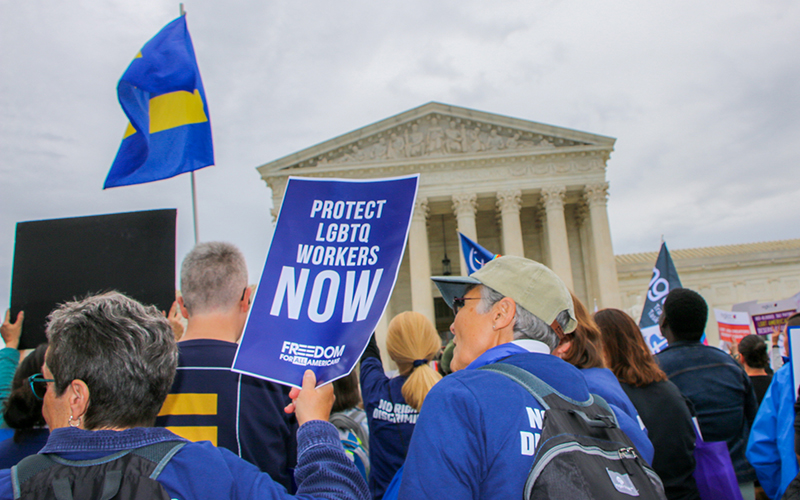Relationships and Going Places
Jo Freeman: There’s Plenty To Do at the RNC – If You Have the Right Credentials
by Jo Freeman
Every national nominating convention has plenty of auxiliary events, some authorized, some not. Getting space can be a challenge; getting the word out even more so. But they do it nonetheless. Press were given a RNC 2024 Master Event Calendar, which was updated a few days later. Events began on Sunday and ended on Thursday. The actual convention sessions were just one item on the list. The calendar said if an event was Open or Closed to press, and also whom to contact to register. I’m going to describe some of the events, including a couple I went to, and a couple I was turned away from.
Since my focus is on women, I obviously wanted to go to those events – if I could.
The National Federation of Republican Women is the largest grassroots Republican women's organization in the country with hundreds of clubs. Founded in 1938, its members made the phone calls and knocked on the doors that elected Republican candidates for decades. It’s Tuesday luncheon featured Arkansas Governor Sarah Sanders. The Master Calendar said it was SOLD OUT and they wouldn’t let me in. I was able to get into their lounge at the Fiserv Forum Wednesday evening, where I was repeatedly asked if I was a member, and if not, would I join. “I’m press,” I said. “I can’t join anything partisan.” I then said: “What brings you here?” On hearing that, finding anyone willing to chat with me was like pulling teeth.
Moms for Liberty met in a concert hall that afternoon. I had pre-registered, and I got in. From high in a balcony seat I listened to several people talk about the evils of transgenderism. It’s webpage says WE BELIEVE Power Belongs to the People. Sound Familiar? With a focus is on parental rights, it wants to “STOP WOKE indoctrination.”
Tuesday I went to “The New Mavericks” reception co-hosted by the Black Republican Mayors Association and the Georgia Republican Party. They honored Sen. Tim Scott, four Congressmen and two Georgia delegates – all male. There was only one mayor on stage, from Aurora, IL. The chair of the Georgia Republican Party was the one white man on the stage. At that event, women served; they didn’t speak. The RNC reported that 55 delegates to the 2024 convention are Black, up from 18 in 2016.
I missed the Independent Women’s Forum toast to “Women Who Make Our Country Great” because I went to Convention Fest: The Official Delegate Experience, which was held in the streets outside the Fiserve Forum and Baird Hall as well as some space inside Baird. To get to that one you not only needed a credential of some sort, but a USSS pass (which I have).
Concerned Women for America parked its pink bus across from the Baird Center the week before the RNC. No one was home. When Convention Fest opened on Tuesday afternoon, they set up a pink tent, from which its leaders preached to whomever passed by. It calls itself “the nation’s largest public policy women’s organization” but its focus is evangelical Christian. The slogan on the side of its pink bus captures this emphasis: “She Prays, She Votes.” A prayer precedes each sermon.
 John Singer Sargent’s Charcoal Portraits, Records of Artistic and Cultural Friendships, as Well as Networks of Patronage
John Singer Sargent’s Charcoal Portraits, Records of Artistic and Cultural Friendships, as Well as Networks of Patronage
John Singer Sargent (1856–1925) was one of the greatest portrait artists of his time. While he is best known for his powerful paintings, he largely ceased painting portraits in 1907 and turned instead to charcoal drawings to satisfy portrait commissions. Many sitters recounted the speed and confidence with which Sargent worked; he finished most of these charcoals in less than three hours. The artist would often invite friends to drawing sessions to keep the sitters entertained and also to help enliven their features. The finished charcoal portraits are valuable testaments to Sargent’s prodigious skill as an artist and draftsman. more »
 STIs Are Contributing to the Public Health Crisis as Cases of Gonorrhea, Syphilis and Chlamydia Are All On the Rise
STIs Are Contributing to the Public Health Crisis as Cases of Gonorrhea, Syphilis and Chlamydia Are All On the Rise
To address this public health threat, biomedical research programs need to be refocused on developing innovative diagnostics, therapeutics, and vaccines for STIs. Healthcare providers need access to faster, low-cost diagnostics to identify both active and asymptomatic STIs. The STI vaccine pipeline also needs to produce effective new candidate vaccines for syphilis, gonorrhea, and chlamydia. As for STI therapeutics, the authors note that research efforts must focus on drug-drug interactions, toxicities and side effects, while keeping ahead of spreading antimicrobial resistance. more »
 What is Sex Discrimination? That Was the Question Before the Supreme Court on October 8
What is Sex Discrimination? That Was the Question Before the Supreme Court on October 8
Jo Freeman writes: Several hundred people protested in front of the Supreme Court on October 8 as it heard oral argument inside on the issue of exactly what is sex discrimination in employment. At the end of the rally 132 people were arrested for blocking the street in planned civil disobedience. "Sex" is one of the protected categories in Title VII of the 1964 Civil Rights Act, which prohibits discrimination in employment. At that time, same-sex relations were a crime in every state except Illinois. Transgender wasn’t even a word. Much has happened in 55 years. more »
 New Mexico: A Sense That You Have Landed Not in Another State But in Another Country
New Mexico: A Sense That You Have Landed Not in Another State But in Another Country
Sonya Zalubowski writes: The first thing that hits you after landing in New Mexico is the vastness of the blue sky, a panorama that surrounds you amid the state’s rough high desert and mountainous landscape. Perhaps that sky with all its limitlessness, including the unrealized possibility of finding more of the gold they found in Mexico, is what first attracted the Spanish to settle this area. Their influence dating all the way to the 16th century plus the large indigenous native American presence color the area’s flavor to this day. more »






